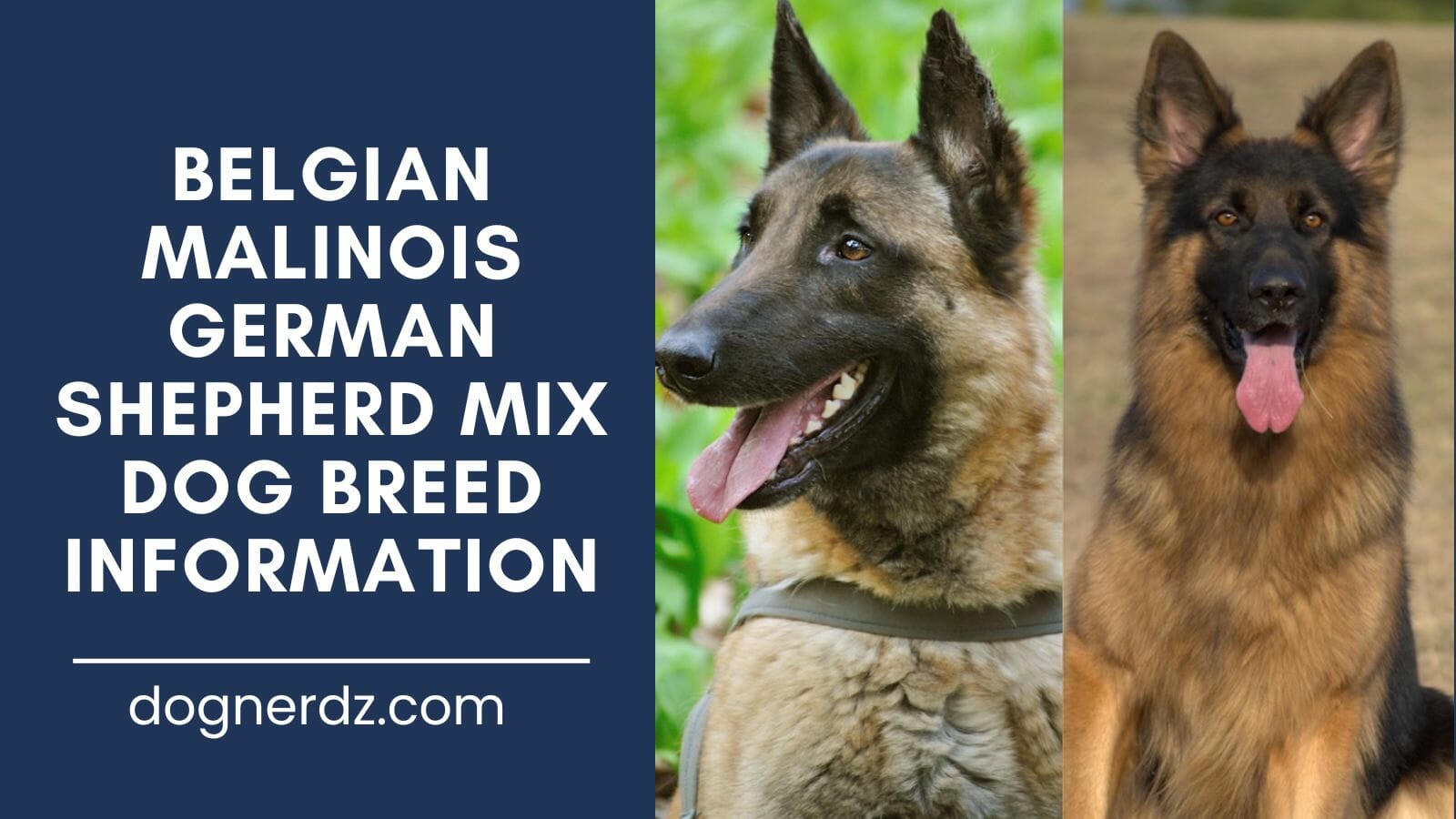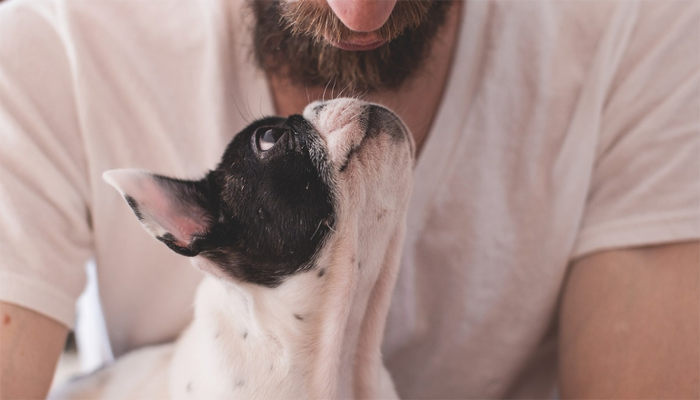The Belgian Malinois and German Shepherd Mix: The Quirky and Energetic German Malinois
Table of Contents
Looking for a dog that is trainable, hard-working, energetic, and incredibly loyal? Well, look no further! The German Malinois has a combination of all of these traits and then some. In this article, we will be explaining everything that you need to know about this unique mixed breed before buying or adopting one. Let’s dive right in!
What is a German Malinois?
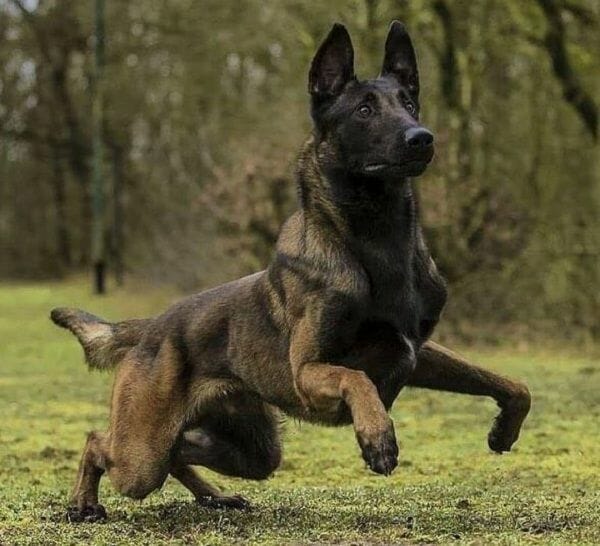
The German Malinois is a mixed breed that is a cross between the German Shepherd Dog and the Belgian Malinois. The result of this cross-breeding has led to a dog that is athletic and dedicated to their owners. Here we will be breaking down the most prevalent characteristics of the German Malinois’ parent breeds.
The German Shepherd Dog
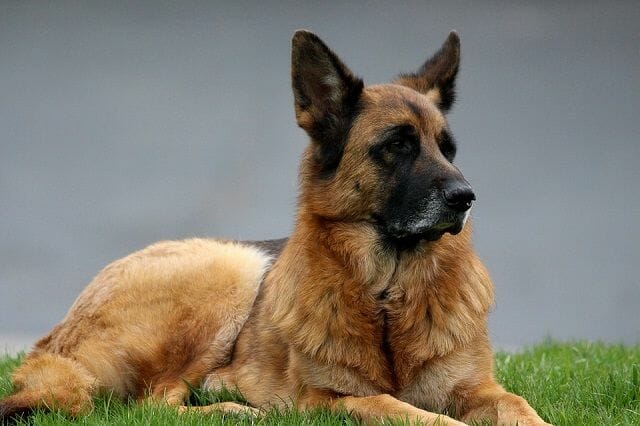
The German Shepherd is a dog originally bred to be a herding and guard dog on farms in Germany. However, over time their jobs have shifted to other roles such as police dogs and seeing eye dogs for the blind. Today the German Shepherd is ranked as the 4th most popular dog breed in the US according to the AKC.
All German Shepherds will have a short and thick double coat that is usually black and tan in color. However, this breed can also occasionally come in solid coat colorations such as solid black or white. German Shepherd Dogs have pointed and erect ears, a bushy tail, and a long snout. They should also have a proportionate head and body with no signs of conditions like hip dysplasia.
German Shepherds are large dogs that are also fairly tall. Male German Shepherds stand between 24 and 26 inches tall at the shoulder and can weigh anywhere between 65 and 90 pounds. Meanwhile, females are between 22 and 24 inches tall at the shoulder and weigh between 50 and 70 pounds.
The Belgian Malinois
The Belgian Malinois is from Belgium, and they were originally bred to herd livestock and guard farms. However, today these dogs are seen more often as police and military dogs. Though not quite as popular as the German Shepherd, the Belgian Malinois is still fairly prevalent in the US and is considered the 36th most popular dog breed according to the AKC.
The Belgian Malinois has a thick and short double coat that comes in solid colors and forms of sable. It is also very common for Belgian Malinois to have a black mask on their face. The Belgian Malinois also has erect, pointed ears and a Bushy tail. However, they also have a straighter gait than German Shepherds on average. The body and head should be proportionate, and Belgian Malinois will always have a long snout.
The Belgian Malinois is as tall as a German Shepherd with males being 24 to 26 inches tall and females being between 22 and 24 inches tall at the shoulder. However, the Belgian Malinois is a bit lighter. Males will be between 60 and 80 pounds, and females will weigh anywhere between 40 and 60 pounds.
What Does a German Malinois Look Like?
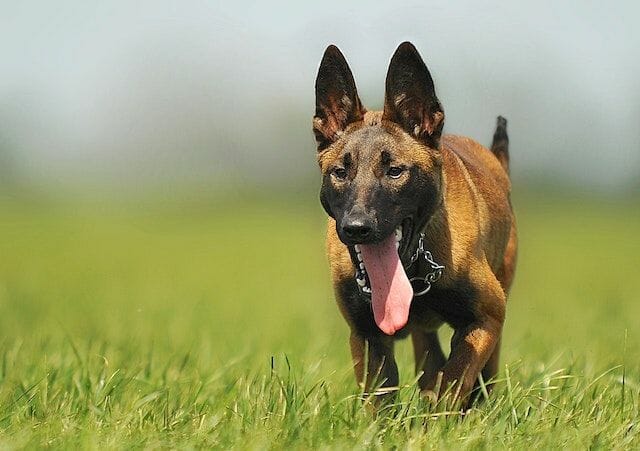
The German Malinois will commonly combine the coat types and physical characteristics of both the German Shepherd and the Belgian Malinois. Here is what the German Malinois tends to look like.
The German Malinois Coat
The German Malinois will have a short and thick double coat just like both of their parents. The coat colors on the German Malinois can come in black and tan like the German Shepherd or forms of sable like the Belgian Malinois. Additionally, the German Malinois can have solid coat colorations with or without a black mask.
Other Unique Characteristics
The German Malinois will always have brown eyes and erect, pointed ears. Their tail should always be bushy in texture and they should have a long snout with a proportionate head and body as well. As for their gait, the German Malinois could have a stance that is more similar to either their German Shepherd or Belgian Malinois parent.
How Big Does a Full Grown German Malinois Get?
The German Malinois Height
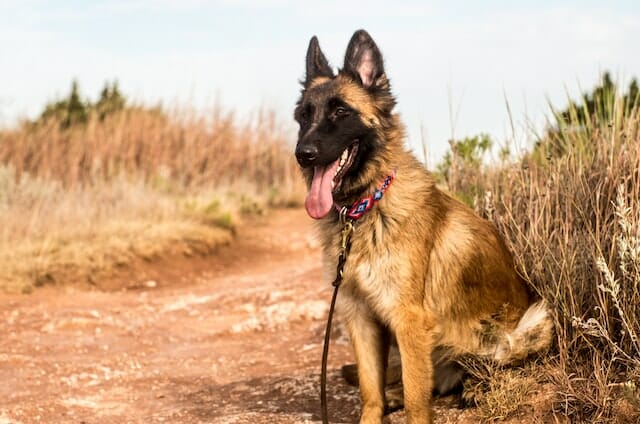
The German Malinois will stand between 22 and 26 inches tall at the shoulder. Males tend to be taller than females.
The German Malinois Weight
The German Malinois can range between 45 and 85 pounds. Males tend to be heavier and larger than females.
How to Take Care of a German Malinois
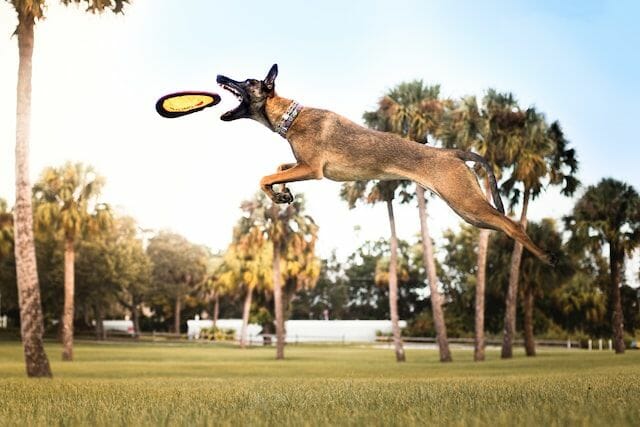
The Belgian Malinois is a dog that takes a lot of time and care. For one, these dogs have coats that need to be groomed fairly regularly, and they also require lots of exercise to stay healthy and emotionally content. Here we will be explaining everything that prospective German Malinois owners need to know about properly taking care of one of these athletic dogs.
How Much Exercise Does a German Malinois Need?
The German Malinois is an extremely energetic dog that needs at least 2 hours of exercise daily. While this can be a good thing for some active families, it is recommended that German Malinois owners also engage their dogs in other active and mentally stimulating activities such as dog sports, scent work, and search and rescue.
If you do not provide a German Malinois with at least 2 hours of exercise per day, they are likely to engage in undesirable behaviors as a result. These things often include destructive and unruly behaviors like destroying furniture and running wildly throughout the house.
Does a German Malinois Need Grooming?
German Malinois do need to be groomed on a weekly basis. This grooming should include a nail trim and a brushing to remove loose, shedding fur. It is also a good idea to clean your dog’s teeth regularly, preferably once a day. Additionally, you should check your German Malinois’ feet, eyes, and ears for signs of infection or injury regularly and clean them as needed.
What is the Best Diet for a German Malinois?
The German Malinois needs to eat around 3 cups of food per day. This food should be separated into two 1 ½ cup meals. Doing this will help prevent digestion complications like bloat, which the mixed breed is unfortunately fairly prone to developing.
When it comes to food allergies, both of the German Malinois’ parent breeds tend to have sensitivities to beef and chicken. It is also common for both breeds to be allergic to corn, wheat, or soy products. The German Malinois may also develop a food allergy to dairy products, eggs, lamb, pork, rabbit, or fish. This is inherited through their Belgian Malinois side.
Are German Malinois Easy to Train?
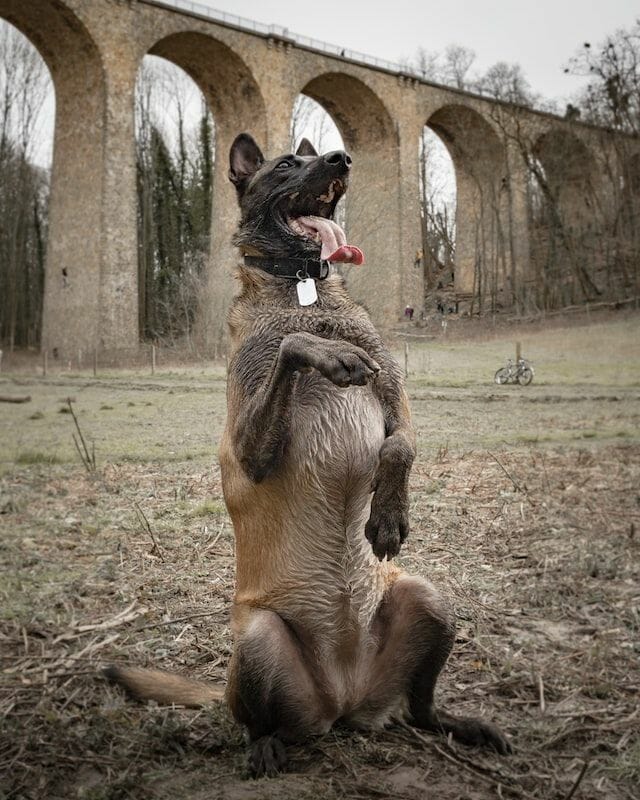
The German Malinois is reportedly a very trainable dog, and they respond very well to early basic obedience training. However, early and consistent training and socialization are also a must if you want to own a well-behaved German Malinois, and you absolutely cannot skip out on this as a result.
Are German Malinois Easy to Potty Train?
The German Malinois is pretty easy to potty train. Most of the time owners find success in potty training their German Malinois puppy by sticking to a consistent potty training schedule.
What is the German Malinois’ Temperament?

The German Malinois is loyal, confident, energetic, and intelligent. While this makes them easy to train and fairly adaptable, there are some other parts of the German Malinois’ temperament that some families may find challenging. Here are some more things that you need to know about the German Malinois’ temperament before you get one.
Does the German Malinois do Well With Children?
The German Malinois can do fairly well around children when well-trained and socialized. However, due to their high energy and strong drive, the German Malinois should always be supervised when around young children to ensure the children’s safety. As a result, this mixed breed tends to do best in homes with older children or child-free homes.
Does the German Malinois do Well With Other Pets?
The German Malinois is a dog that can be around other medium and large sized dogs, but it is always recommended that they are supervised whenever interacting with them. Since many German Malinois will have a high prey drive, this dog is not recommended around cats and small dogs most of the time. Similarly, no German Malinois should be left around small pets like guinea pigs or rabbits at any time.
Is the German Malinois Aggressive?
The German Malinois should not be inherently aggressive. However, they can become aggressive if they have been mistreated or if they have had a bad experience with a person or another dog in the past.
What Environment is Ideal For a German Malinois?
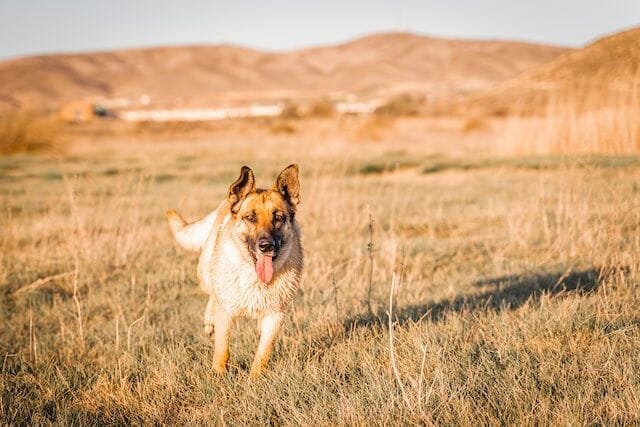
The German Malinois loves to run freely, and they also need a lot of exercise. As a result, the German Malinois needs a lot of space and a house with a large yard. While the German Malinois can do well in some suburban environments, they tend to do much better in rural settings. These dogs are not suited for city living.
When it comes to climate, the Belgian Malinois is not particularly sensitive to hot or cold temperatures. However, extremely hot and cold weather could harm a German Malinois just like it could any other dog breed, so this is an important consideration if you live in an extremely cold or hot climate.
What is the Average Lifespan for a German Malinois?
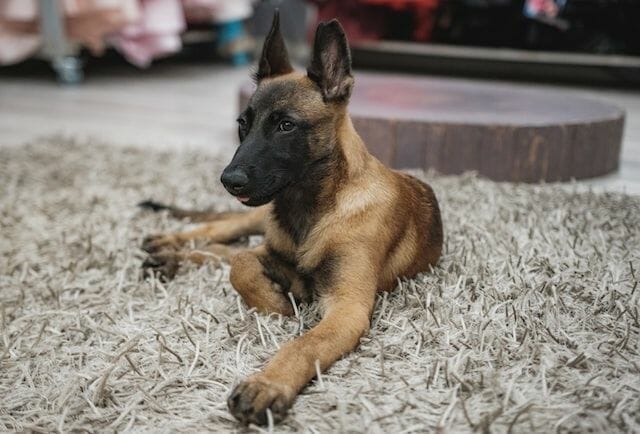
The average lifespan for a German Malinois is 10 to 15 years. Of course, keeping your German Malinois at a healthy weight, feeding them a healthy diet, and providing them with the recommended amount of exercise will help your German Malinois live the longest life possible.
Is the German Malinois a Healthy Breed?
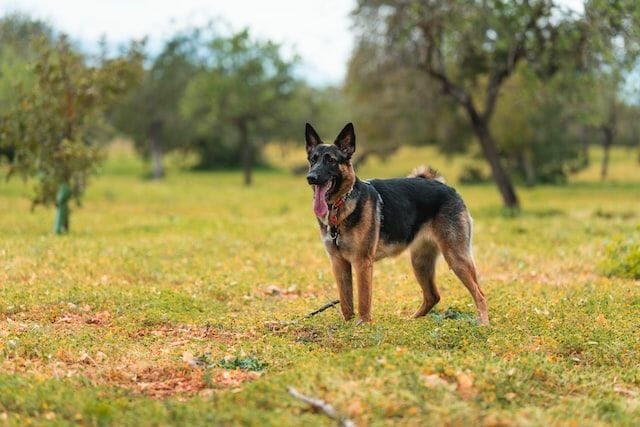
The German Malinois is a fairly healthy mixed breed. However, just like with any other type of dog, the German Malinois is genetically predisposed to some medical conditions. Here are some health issues that can occur in the German Malinois.
- Hip Dysplasia
- Elbow Dysplasia
- Bloat
- Epilepsy
- Pannus
- Allergies
- Hemophilia
- Degenerative Myelopathy
Taking your German Malinois to its routine vet visits will help your vet to screen for the above conditions in order to catch them early on if they do occur. This will allow your dog to receive the best medical care possible and ensure that they are as comfortable as they can be during treatment.
How Much Does a German Malinois Cost?

While there are some German Malinois breeders out there, most people will get this mixed breed from either a shelter or rescue. Most of the time adoption fees from these facilities cost as little as $100 to as much as $600. Of course, adoption costs will differ from facility to facility, and things like your location and the age of the dog can affect the cost of adoption fees as well.
Where to Adopt a German Malinois
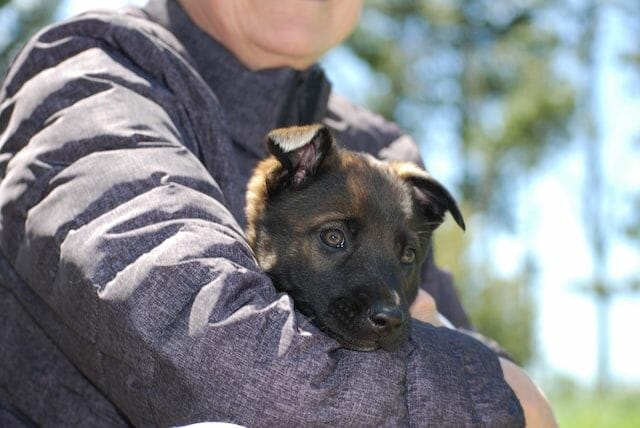
Considering that the Belgian Malinois is not an incredibly common dog breed in the United States, most people will have luck finding a German Malinois at a breed rescue. Both Belgian Malinois breed rescues and German Shepherd breed rescues will potentially have a German Malinois for adoption. Of course, there is also a slight chance that you will find a German Malinois in a city or county shelter as well. Here are some tips on finding the right shelter or rescue for you.
Tips for Finding the Right Shelter or Rescue
As we have just mentioned, you have the best chance of finding a German Malinois at a private rescue. Your best bet is going to be looking into Belgian Malinois breed rescues, as this breed is less common than the popular German Shepherd. However, some German Shepherd breed rescues may have a German Malinois for adoption from time to time as well.
A benefit to most breed rescues is that they are smaller than shelters, and they usually have fewer dogs in their care. This means that they can get to know the dogs fairly well and set them up with some basic obedience training, especially if the dog is in foster care. Getting your German Malinois from a small rescue will really set them up for success since they require a lot of training and some specialized care.
Of course, getting a German Malinois from a larger animal shelter is not necessarily a bad choice either. You may just need to put in some extra work on the basic obedience training side of things. Additionally, you may need to be extra vigilant when introducing one of these dogs to children and other dogs when getting them from a shelter, as they will likely not know the dog quite as well.
Conclusion (Is the German Malinois Right for You?)
The German Malinois can make a great fit for active individuals that are willing to spend a lot of time training and exercising their dog. This can be a great choice for those looking for a dog that is suitable for dog sports or scent work. While the German Malinois can do fairly well around children when well-trained, they will always need to be supervised when around very young kids. Additionally, the German Malinois does best in rural environments where they have plenty of space to run and explore.

